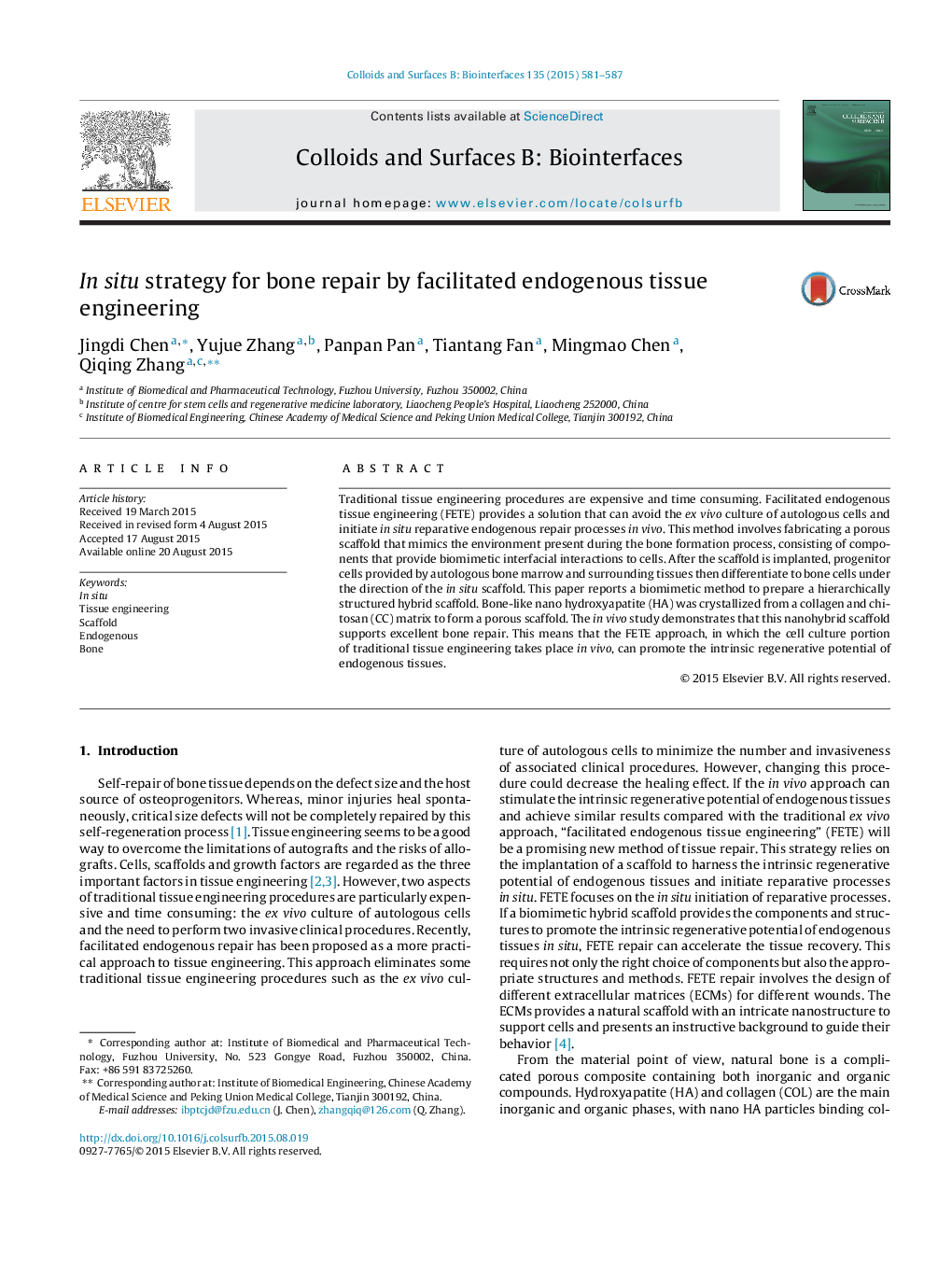| کد مقاله | کد نشریه | سال انتشار | مقاله انگلیسی | نسخه تمام متن |
|---|---|---|---|---|
| 599281 | 1454269 | 2015 | 7 صفحه PDF | دانلود رایگان |

• The similar phase structure indicated the possible similar property of the HA in the scaffold as the natural bone.
• According to the XRD results, the scaffold was composed of organic phases (CS, COL) and inorganic phase (HA). The porosity of scaffold was 95.6 ± 0.3 and HAP particles with a diameter of 80–178 nm scattered homogeneously in the scaffold.
• Facilitated endogenous tissue engineering (FETE) focuses on initiate reparative processes in situ in vivo, have shortened the traditional tissue engineering procedures.
Traditional tissue engineering procedures are expensive and time consuming. Facilitated endogenous tissue engineering (FETE) provides a solution that can avoid the ex vivo culture of autologous cells and initiate in situ reparative endogenous repair processes in vivo. This method involves fabricating a porous scaffold that mimics the environment present during the bone formation process, consisting of components that provide biomimetic interfacial interactions to cells. After the scaffold is implanted, progenitor cells provided by autologous bone marrow and surrounding tissues then differentiate to bone cells under the direction of the in situ scaffold. This paper reports a biomimetic method to prepare a hierarchically structured hybrid scaffold. Bone-like nano hydroxyapatite (HA) was crystallized from a collagen and chitosan (CC) matrix to form a porous scaffold. The in vivo study demonstrates that this nanohybrid scaffold supports excellent bone repair. This means that the FETE approach, in which the cell culture portion of traditional tissue engineering takes place in vivo, can promote the intrinsic regenerative potential of endogenous tissues.
The CC functional groups regulated the crystallization process of nano HA, which achieved nano homogeneous distribution in the three-dimensional porous matrix through only one step treatment, and was successfully induced bone formation in vivo.Figure optionsDownload as PowerPoint slide
Journal: Colloids and Surfaces B: Biointerfaces - Volume 135, 1 November 2015, Pages 581–587